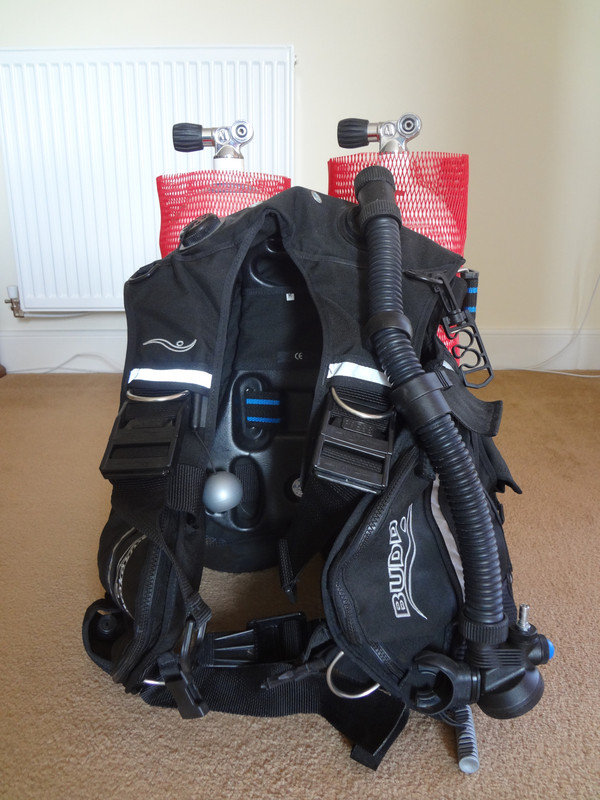You keep them in box
@HenryUK -- the great thing about this thread/discussion is it's getting you to think about the issues you're trying to mitigate. Like most things, they're hard at first, then become easier once you've done it a few times.
For your average depths... If you're planning ahead of time then you have to assume the worst case. For your wreck dive, you'll assume the 40m/132ft as a square profile for planning purposes. The reality will be different as you'll mooch around above the seabed, often around the deck or wheelhouse which could easily be 10m/33ft higher.
Groan; digs out the PADI RDP cards rather than using MultiDeco....
Thus if you go for depth, you've 11 mins less on the bottom phase than if you mooch around the top of the wreck.
- From the RDP, a 30m/100ft dive on air is 20 mins NDL (No-Decompression Limit).
- A 40m/132ft dive on air is 9 mins NDL.
28% Nitrox will give you a few more mins of bottom time -- The equivalent air depth EAD is 36m, so maybe 3 more mins - 12 mins at 40m.
Now your problem is this; your PLAN that you've (possibly) written on your slate is for a bottom time of 12 mins, but this assumes a square profile at 40m. You COULD have two plans, one for 40m and another for 25 mins at 30m. Or another for 35m. Where does it stop!
Therefore you'll use your computer. These are good at keeping a tally on your NDL. You know your bottom time will be somewhere between 12 mins and 25 mins; the computer will tell you when time's up.
BUT (this is Basic Scuba); you MUST keep an eye on your remaining gas pressure. Using the gas calculations further up this thread, you will know how much gas you'll need for the ascent from 40m to the stops and to the surface. Add to that the 50bar/750psi safety margin (you need to be on the boat with that left in the cylinder or suffer the wrath of the DiveMasters!
If this were me and I had to stick to the NDLs, I would more accurately work out the gas required for the ascent + stops + ascent. This would be a number X. To that I'll add 50bar/750psi and the result is my Minimum Gas. The dive would then be on the computer where the ascent is triggered at hitting EITHER Minimum Gas OR hitting the NDL on the computer.
You also need to factor in your buddies who will have worked out their figures in advance. With a reasonable 16 litre SAC you'll possibly find the others will be heading up before you -- and, as they're buddies, you must also leave with them.
As a complete aside and well beyond the scope of Basic Scuba... With Accelerated Decompression using oxygen rich gasses and the correct equipment (twinset + stage(s); rebreather) you could do an hour on the bottom with around 50 mins of decompression. We've a lot of dives like that around the UK. Lots more training required. And much more money!
Thanks for your reply, it’s been most helpful and has indeed prompted me to consider other variables and the risks these present.
I’ve been looking at the NOAA Nitrox tables (https://www.omao.noaa.gov/sites/default/files/documents/1.4 Nitrox Tables New ver 7 Oct 2016.pdf) which suggests a NDL of 15min at 130ft using 28% and I planned to keep well within this.
As you say, I won’t be spending 10-15min on the seabed, likely a couple of minutes before ascending to the deck and bridge; so I shouldn’t have too much trouble staying with NDLs so long as I closely monitor depth and time.
As suggested in another post, I’ve downloaded a dive planning app (Baltic lite - the free version) which provides a guide on multi-level dive run time, deco time, gas consumption and CNS which is very helpful.
Good advice on minimum gas, I’ll work that out, monitor gas and NDLs and let that dictate when to turn the dive - unless of course my buddy gets there first.
On twinsets, side mounts, stages and rebreathers - yes, I have it all to look forward to… better start saving now…
For UK diving - I am hoping to dive Scapa Flow at the end of this year or early next year once I’m trained to use twinsets and have done advanced Nitrox and accelerated decompression training, I will be in Portland during the summer and Lake District in spring with local (London) dives in between… lots of opportunities to get comfortable in my drysuit before progressing to more advanced diving.
Thanks again…





